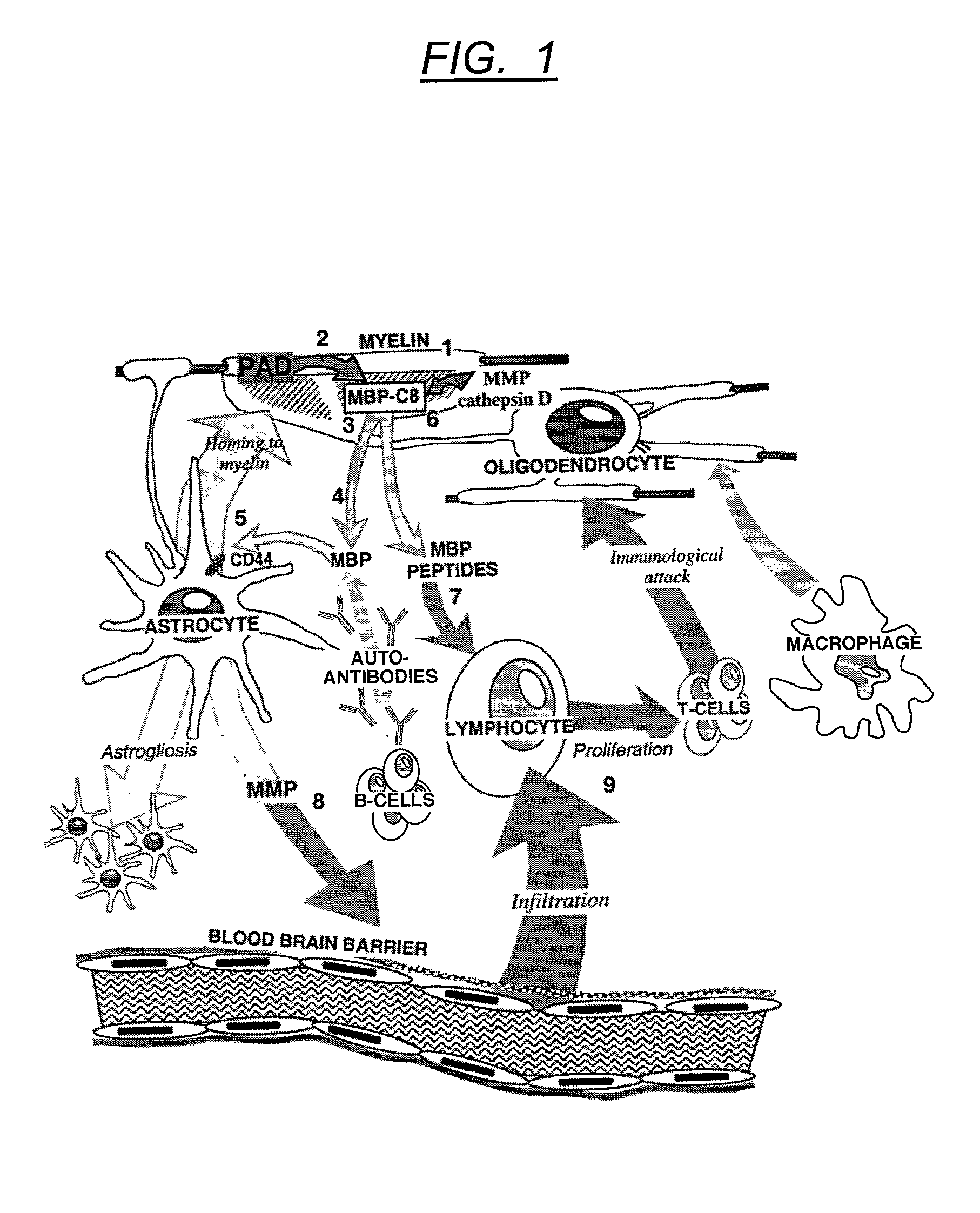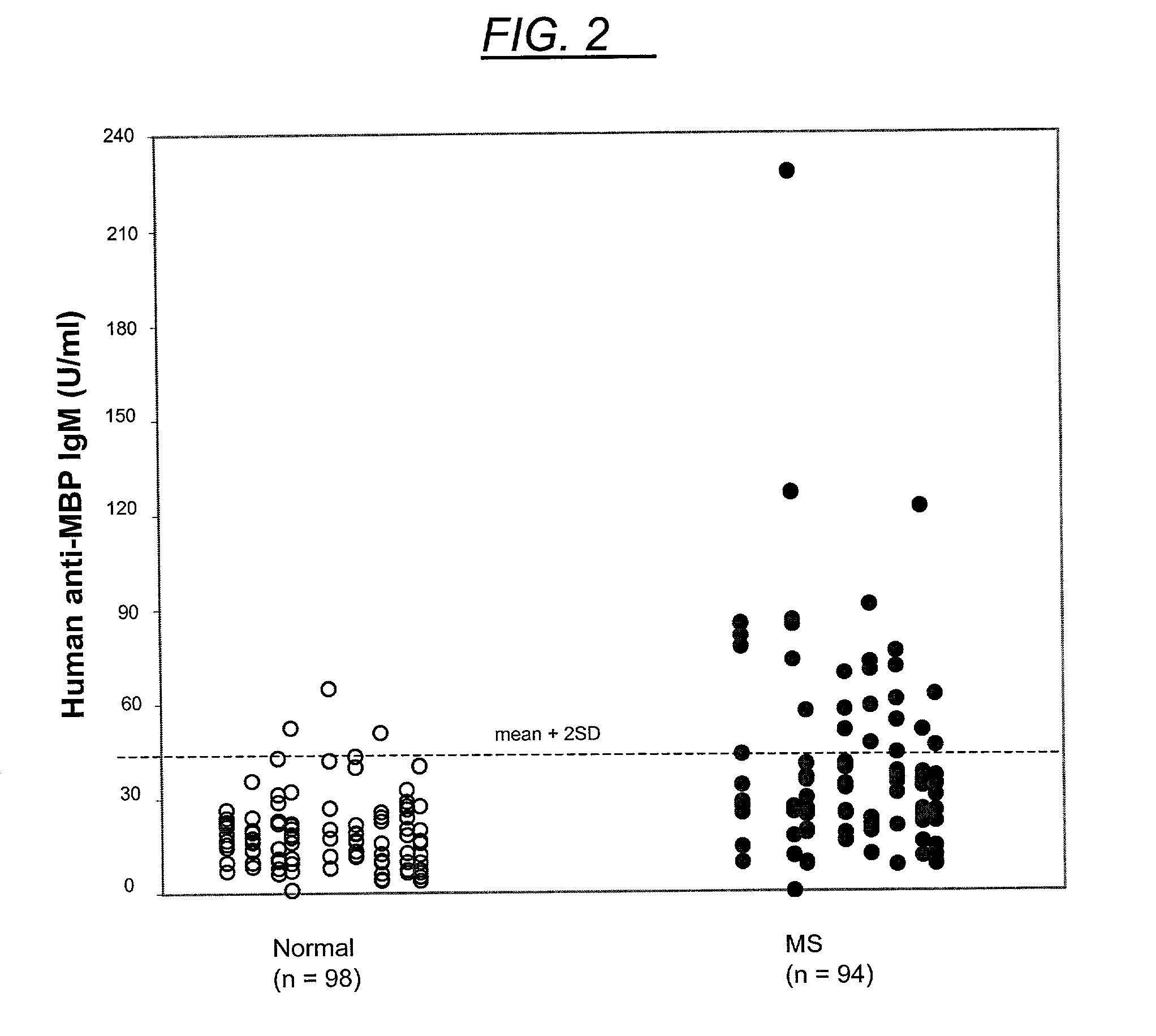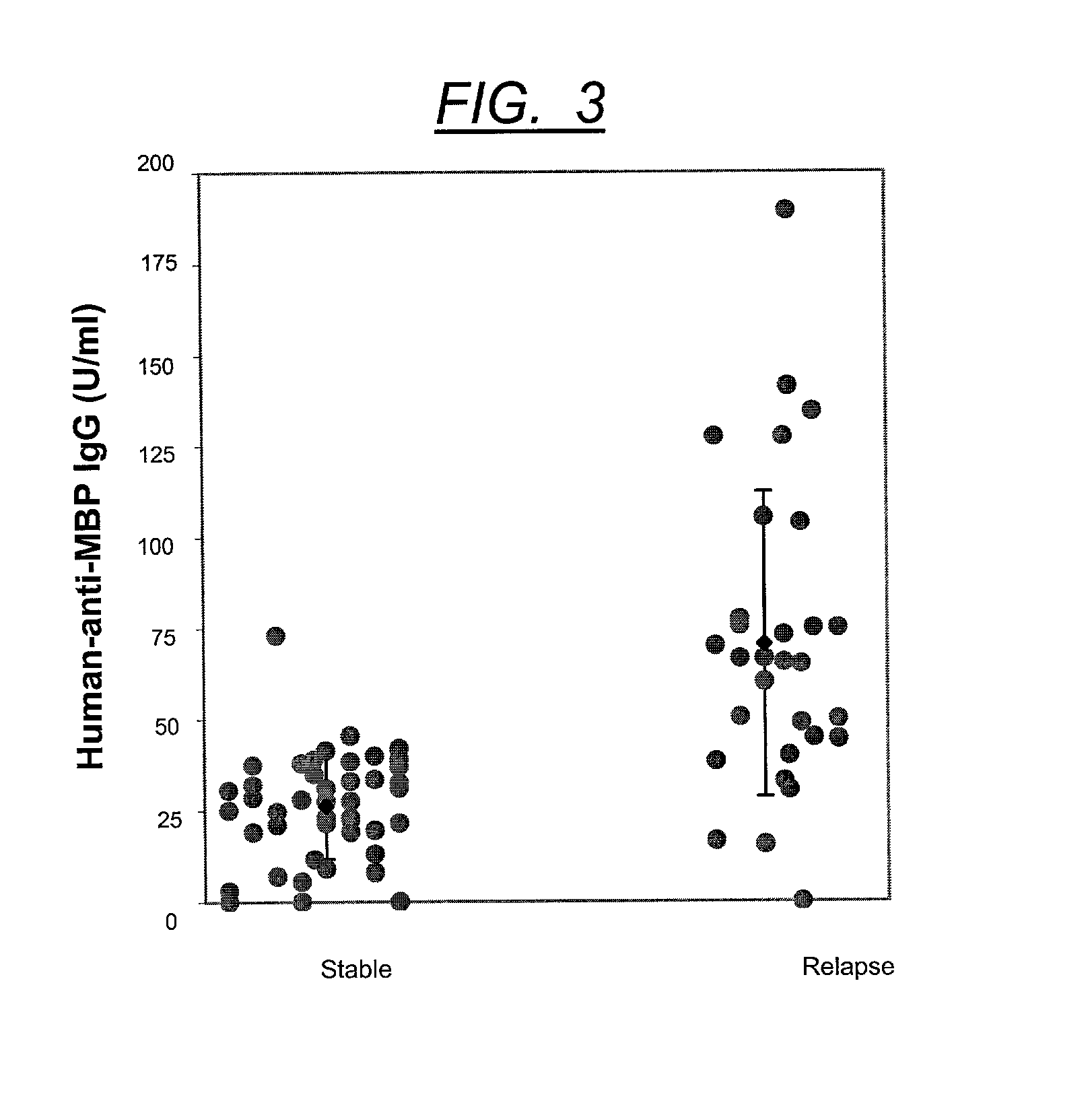Method for diagnosing multiple sclerosis and an assay therefore
- Summary
- Abstract
- Description
- Claims
- Application Information
AI Technical Summary
Problems solved by technology
Method used
Image
Examples
example 2
[0090] MBP Autoantibody ELISA
[0091] Microtiter Plate Preparation
[0092] All odd column wells of 96 well microtiter plates (MaxiSorp, Nunc) were coated with 125 mL of 8 mg / L unfractionated myelin basic protein (bovine) in 100 mM carbonate / bicarbonate buffer, pH 9.6. All even column wells were coated with 125 mL of 100 mM carbonate / bicarbonate buffer (modified Crimando and Hoffman, 1992). Plates were sealed with ELISA plate sealer (Costar) and incubated at 4.degree. C. overnight. Plates were then washed three times with 10 mM PBS+0.05% Tween-20, 300 mL / well. All wells were subsequently blocked with 250 mL / well of 2% w / v BSA (Equitech-Bio) in carbonate / bicarbonate buffer, to reduce non-specific binding, and were incubated at 4.degree. C. overnight.
[0093] ELISA Protocol (FIG. 5)
[0094] Plates were washed three times with 10 mM PBS+0.05% Tween-20. Plasma test samples were diluted in the dilution buffer which consisted of 10 mM PBS, 0.05% Tween-20 and 5 USP / mL heparin (Sigma) (Pesce et al.,...
example 3
[0095] Western Blot Protocol for the Detection of MBP Autoantibodies IgG
[0096] The equivalent of 2 .mu.g unfractionated myelin basic protein (bovine) per lane was separated by 12.5% sodium dodecyl sulfate polyacrylamide gel electrophoresis (SDS-PAGE) at 180 volts(V) for 60 minutes at room temperature (Laemmli, 1970) as well as, 6 mL of precision molecular weight markers (BIORAD). The gels were then transferred to Immobilon P PVDF membranes (Millipore) at 100 V for 180 minutes at 4.degree. C. using 10% methanol in transfer buffer. Following electroblotting, the membranes were blocked with 5% Blotto / TBS and allowed to incubate for 60 minutes, shaking at room temperature and then incubated at 4.degree. C. overnight. The membranes were washed for 30 minutes at room temperature, shaking with Tris buffered saline+Tween-20 (TTBS). The membranes were secured in the MiniCell Protean III multi-sample apparatus. Thirty-eight normal serum samples and forty-two clinically definite MS samples wer...
example 4
[0098] MBP Autoantibody ELISA Development And Assay Performance
[0099] Numerous optimization experiments must be conducted during the development of an immunoassay in order to maximize analytic and clinical sensitivity, as well as minimize non-specific interference within the assay. Since most assays for specific antibodies are qualitative, these experiments generate an assay which minimizes false positive results and allow for a low detection limit required to detect low titer antibody levels (Micallef and Ahsan, 1994), while maintaining low levels of imprecision. Upon the completion of the fully optimized assay, experiments to determine performance characteristics are conducted to show that the assay is precise and repeatable. For example, MaxiSorp C plates offered a more reliable measurement of antibody while maintaining an excellent signal to noise ratio. Therefore, MaxiSorp microtiter plates were the optimal solid phase for this assay.
PUM
 Login to View More
Login to View More Abstract
Description
Claims
Application Information
 Login to View More
Login to View More - R&D
- Intellectual Property
- Life Sciences
- Materials
- Tech Scout
- Unparalleled Data Quality
- Higher Quality Content
- 60% Fewer Hallucinations
Browse by: Latest US Patents, China's latest patents, Technical Efficacy Thesaurus, Application Domain, Technology Topic, Popular Technical Reports.
© 2025 PatSnap. All rights reserved.Legal|Privacy policy|Modern Slavery Act Transparency Statement|Sitemap|About US| Contact US: help@patsnap.com



